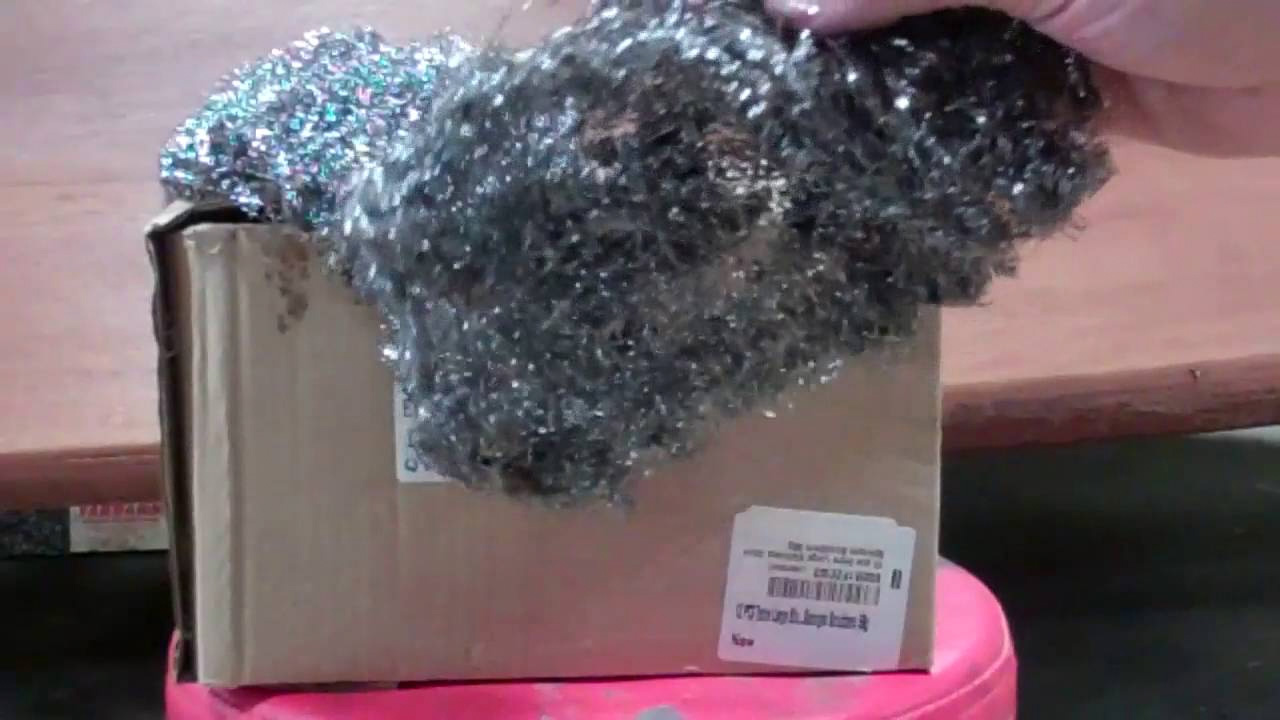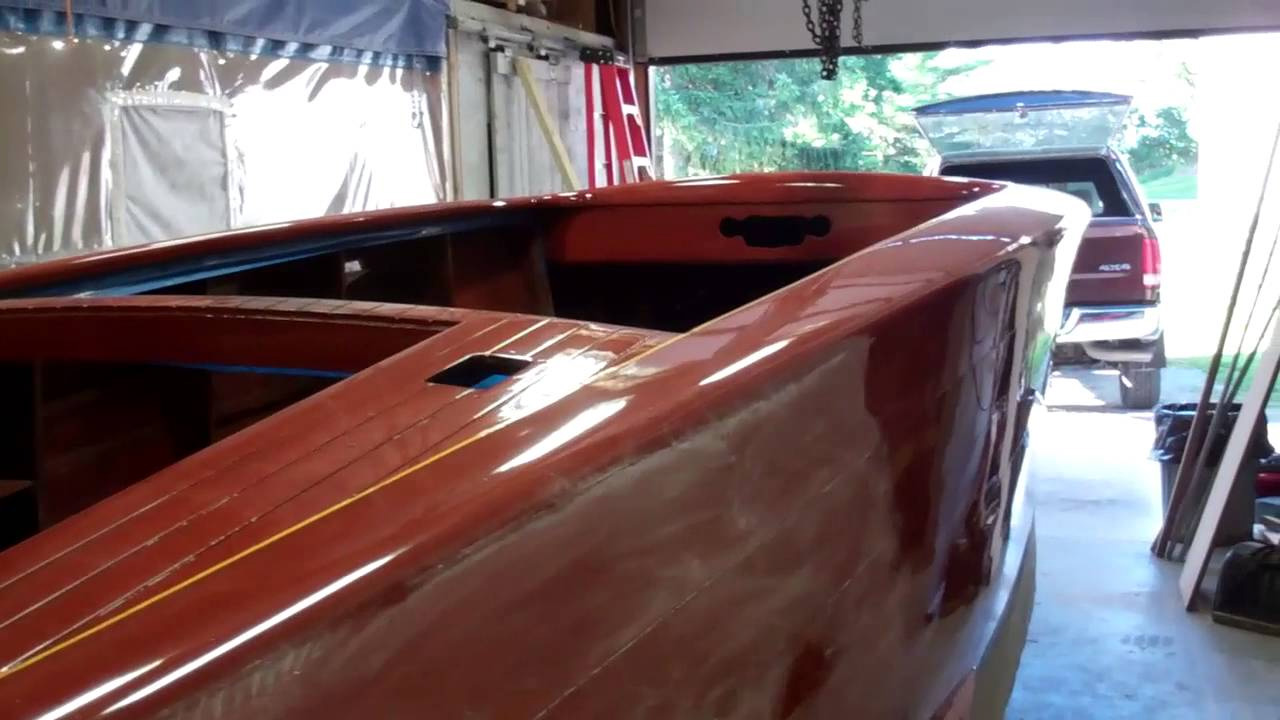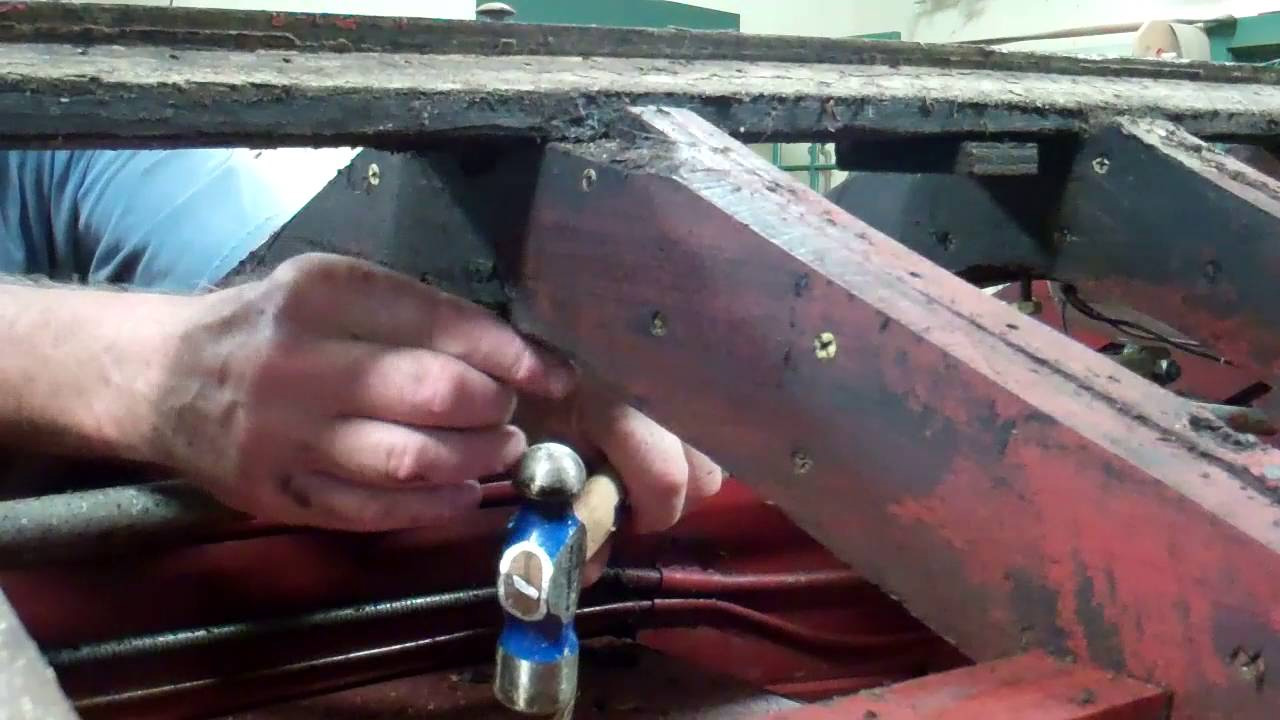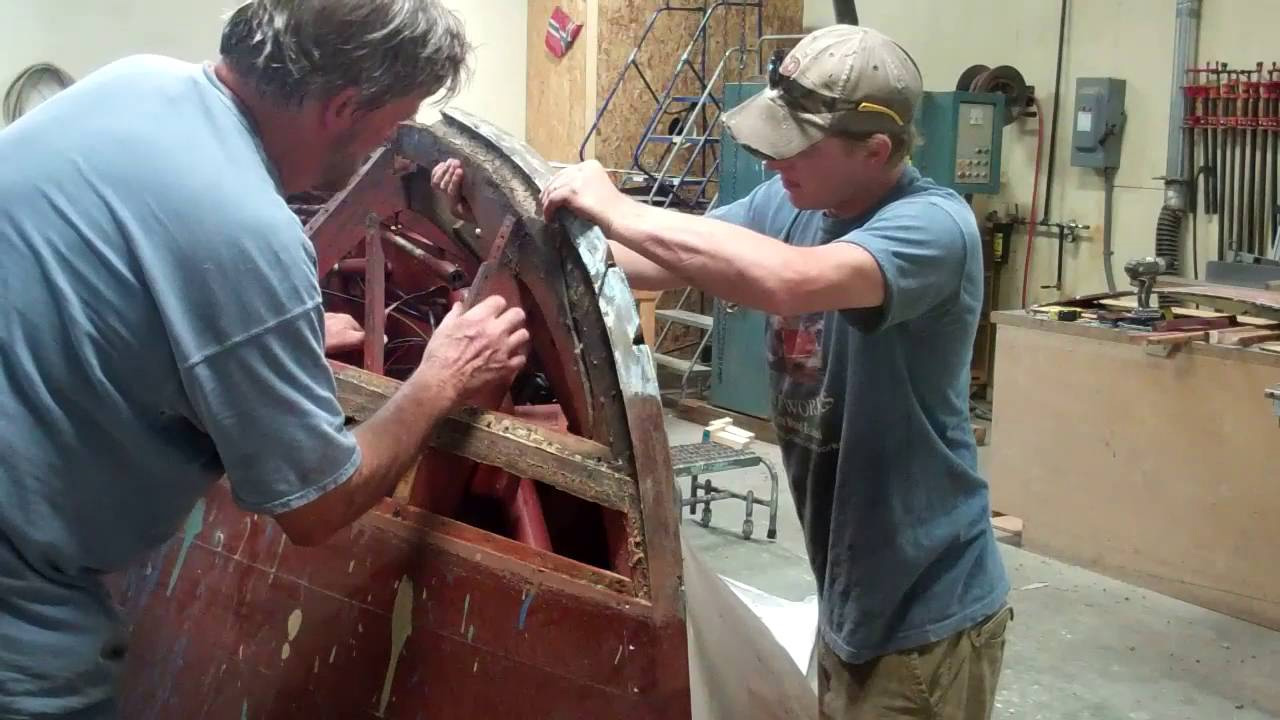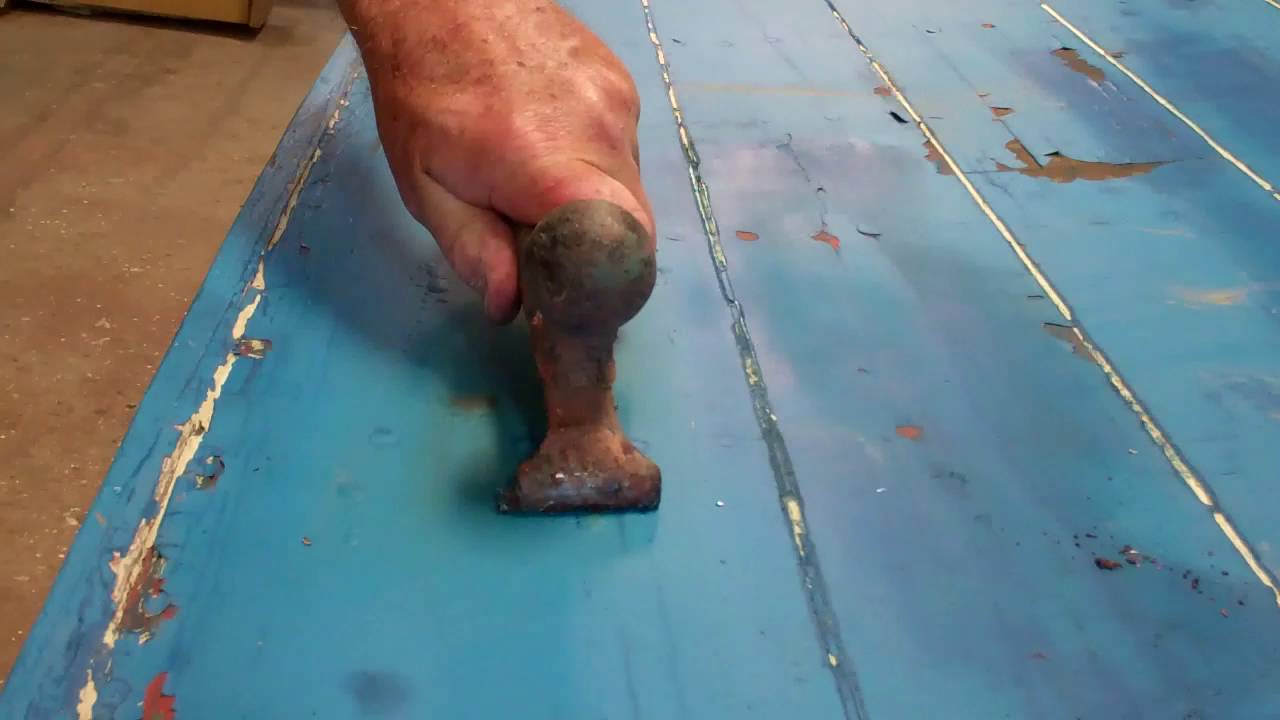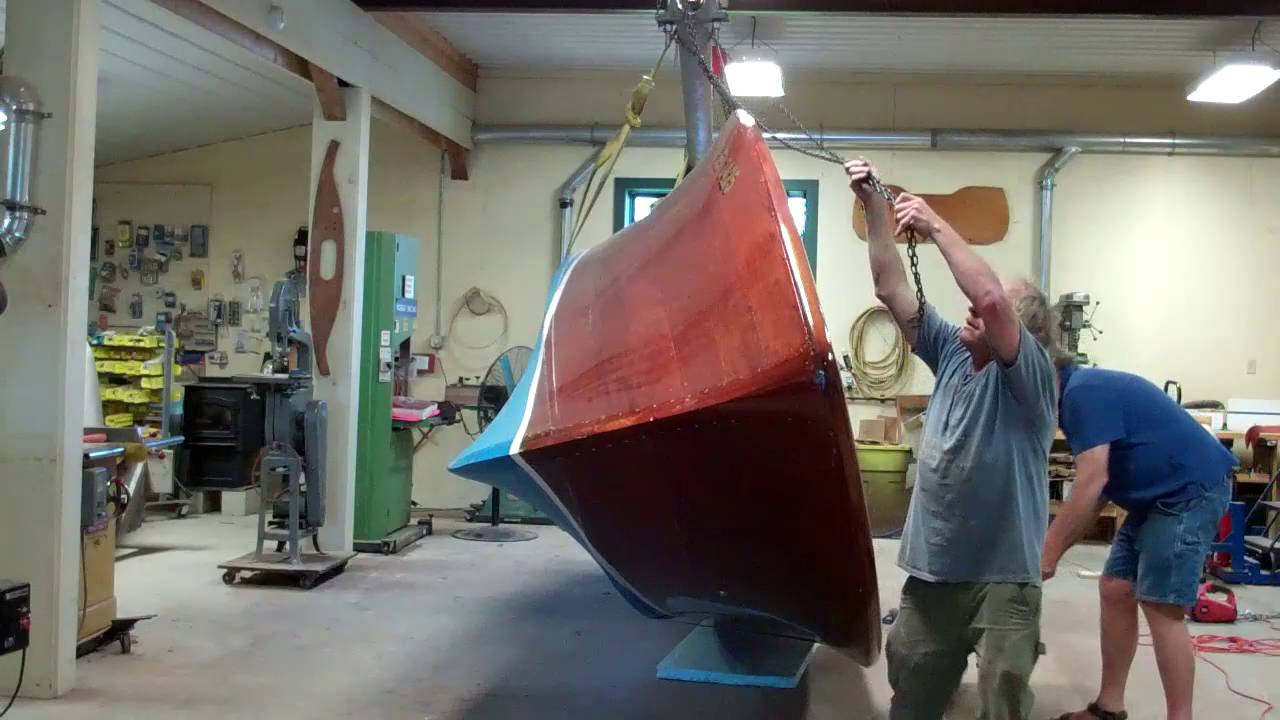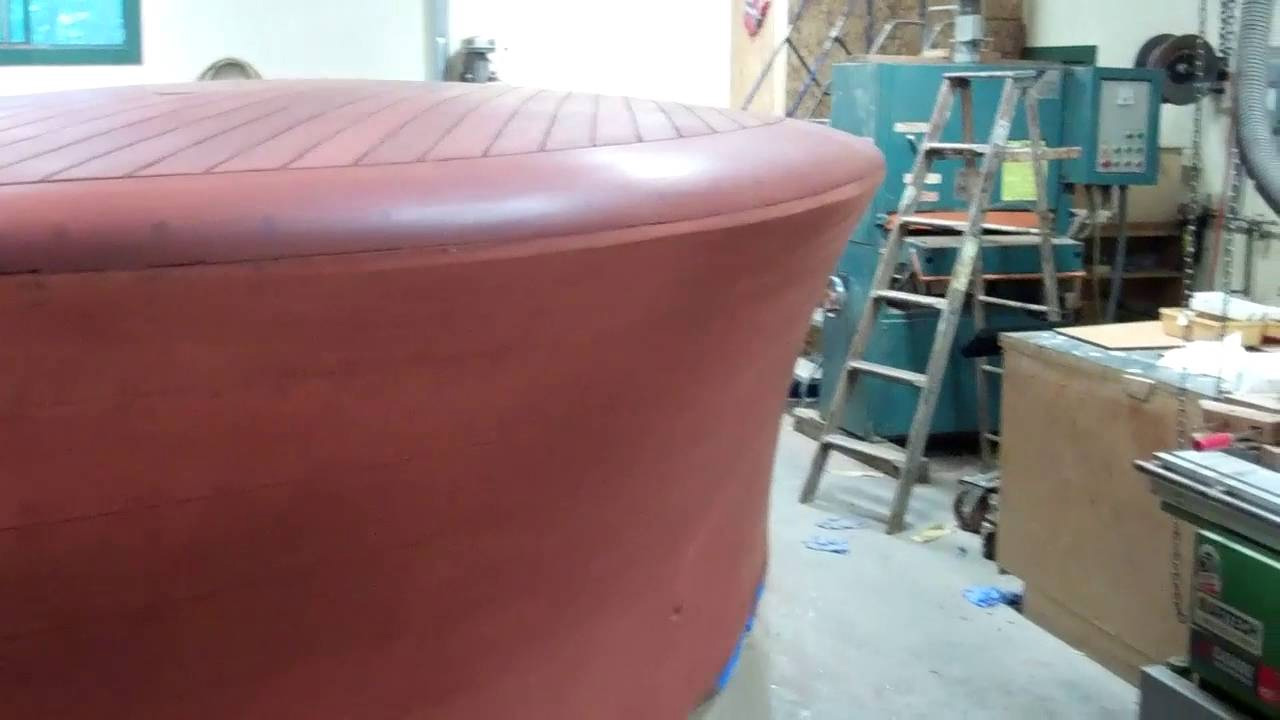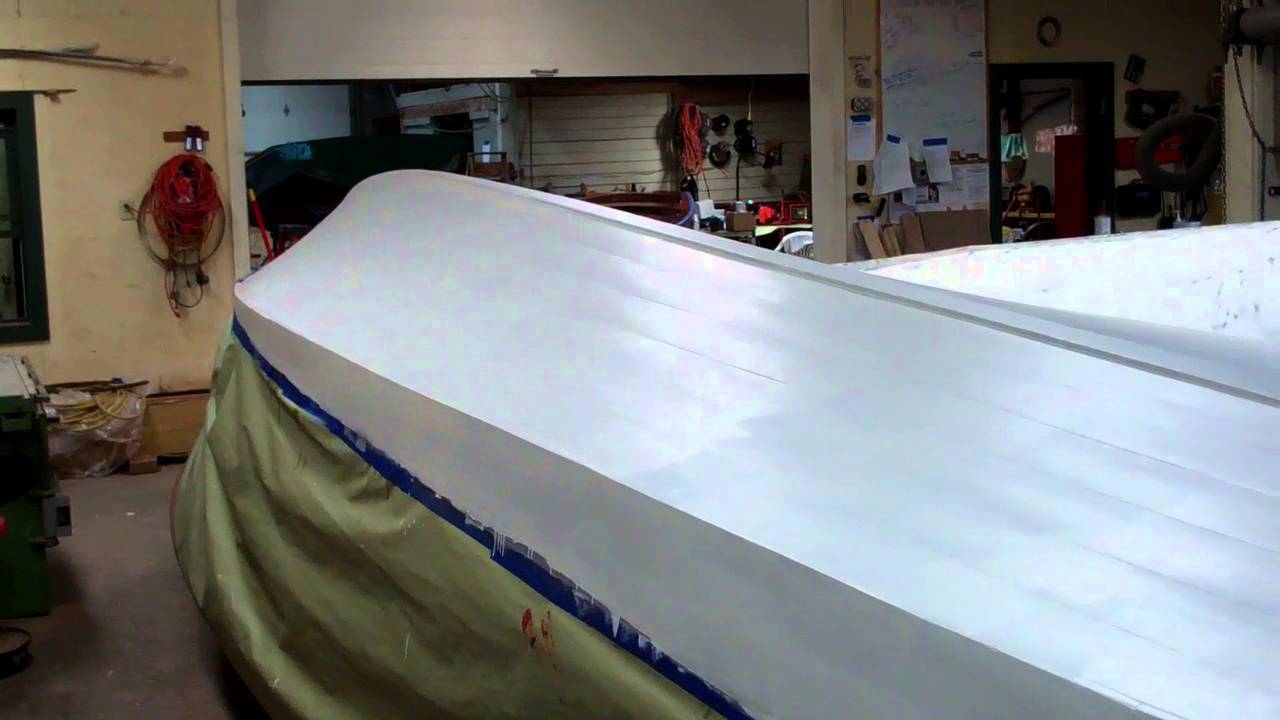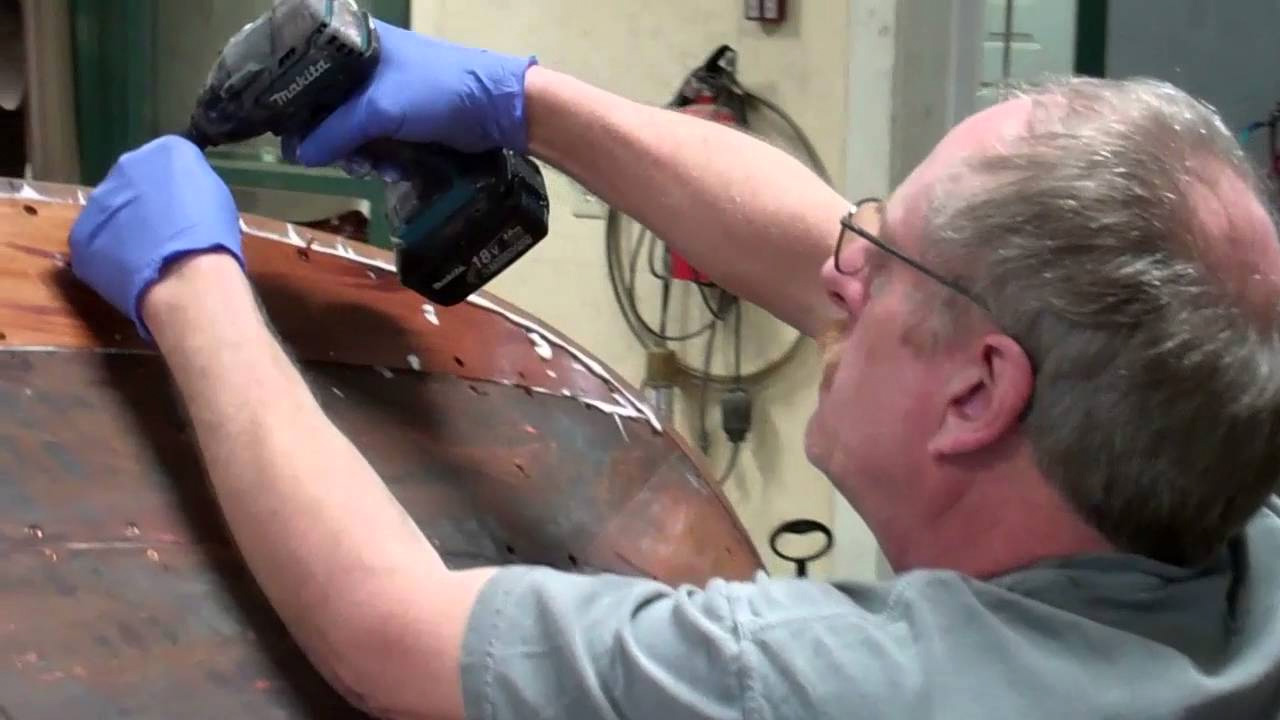The 1046 bright U22 is finally looking, well, a bit bright. Her port topsides are now bereft of varnish and stain. I have taken a first pass at marking all of the dings and related physical graffiti with blue painter’s tape. (I erred on the clip by referencing what we are looking at as the starboard topsides.
Just when I have the sides sorted out while she is flipped, we will return her to right-side-up!)
Once John and RJ finish their inspections, it will be time for John to correct each and every ding, scratch and split, most of which he will accomplish with what I characterize as “feathery” Dutchman because they are. The smaller issues will be addressed using a mahogany-stained filler we make up with mahogany sanding dust and mahogany Sikaflex.
Serendipity visited us today. Just as I finished slathering Circa 1850 onto a section of planks, the cell rang and I was away from the work for several minutes. Upon returning to scrubbing, I noticed that allowing the stain to work, even if unintended, improved the scrubbing effect materially. If you watch the clip again, notice how much cleaner relative to the aft section the hull is amidships forward.
Lesson: Be patient. Give the stripper a few minutes to draw the stain out of the wood, and your efforts will return larger dividends in less time.
Why not wait longer? I did some informal testing as I continued. Since a very thin film of stripper is applied at this stage, I discovered that it began drying after three minutes or so, and that those dry areas resisted my efforts quite well. Two or three minutes seems to be the point at which diminishing returns to waiting set in.
We purchased several cases of 12 stainless steel sponge scrubbers from Amason.com Prime – today’s price is $13.45. Here is the link: https://www.amazon.com/gp/product/B00…

